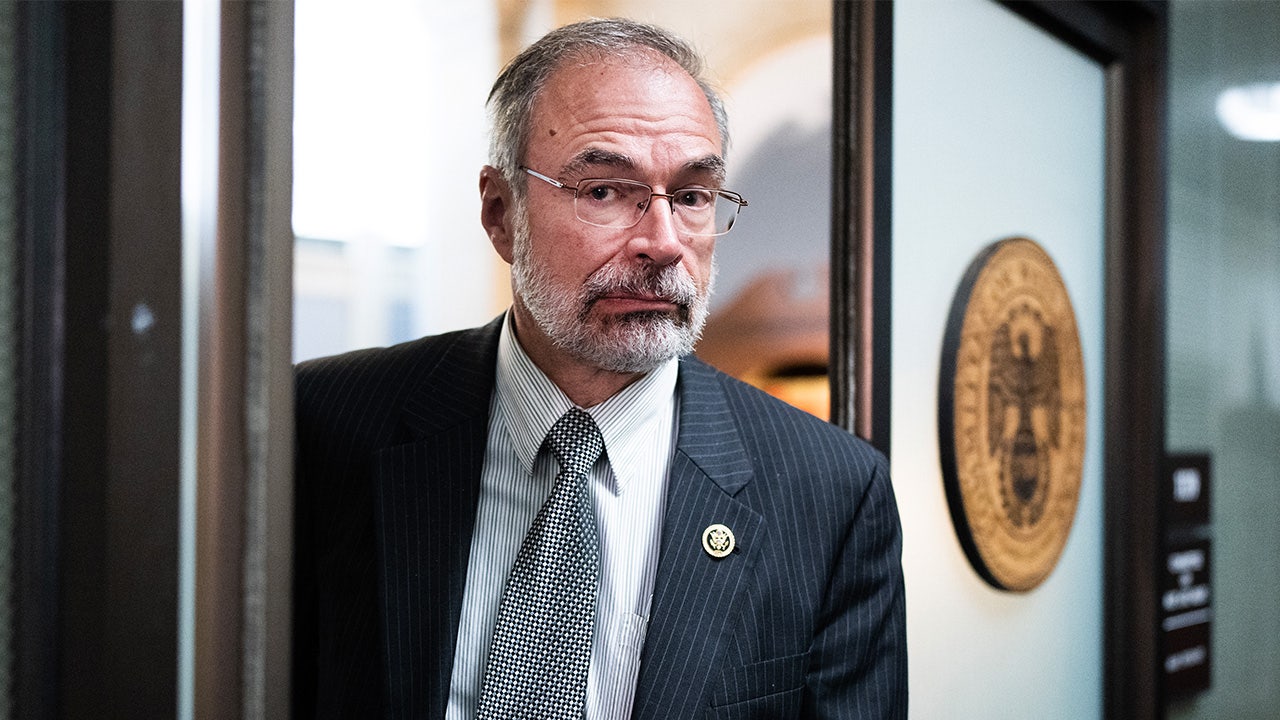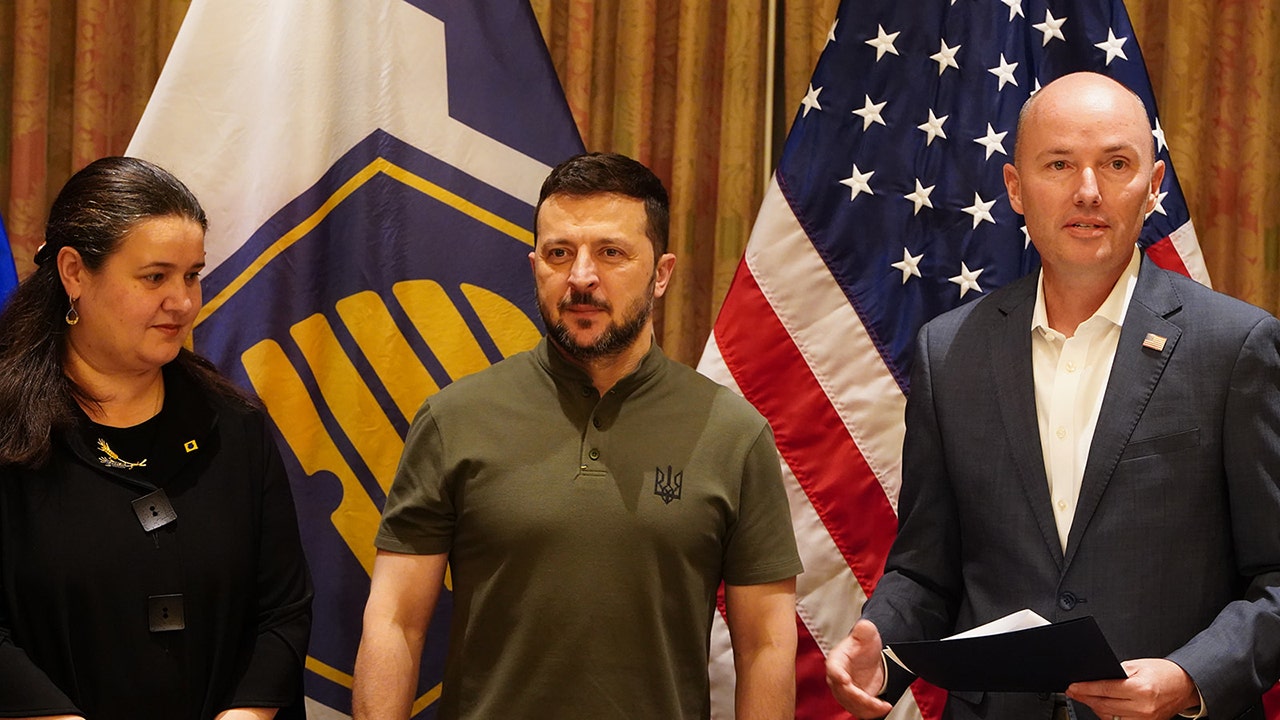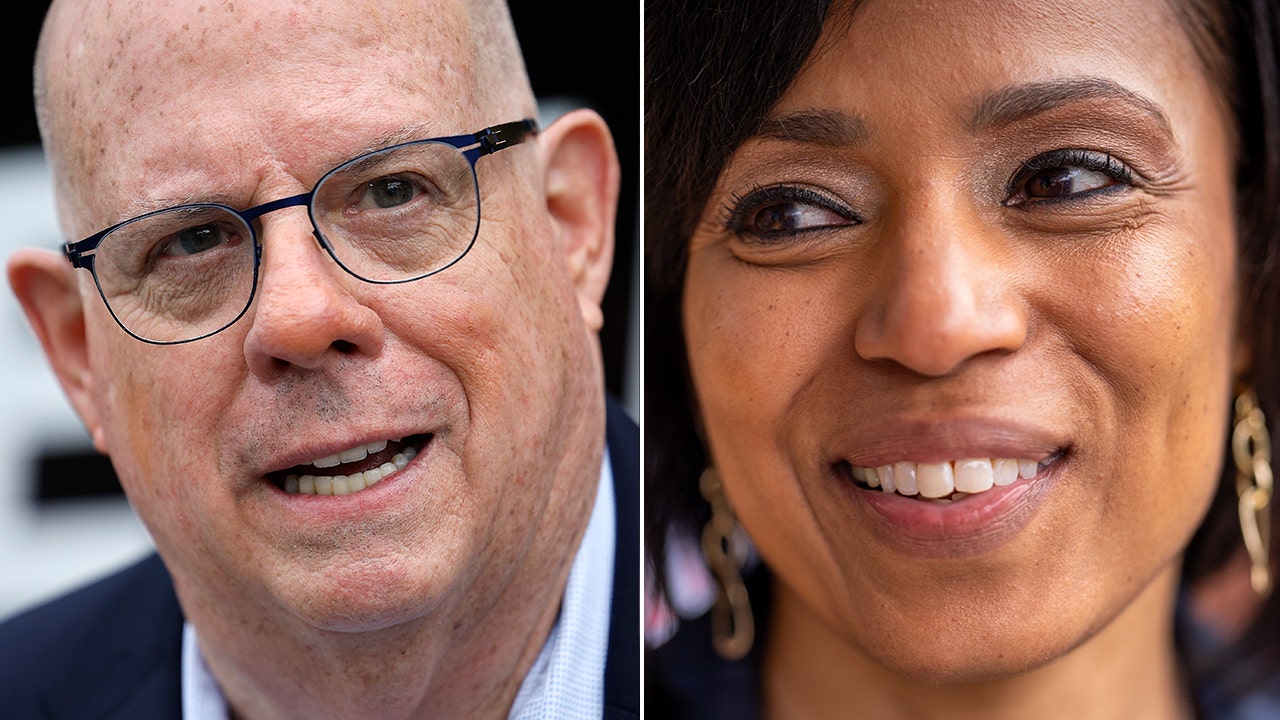Lifestyle
Uzo Aduba thanks her mom: 'I didn't know how many prayers she sent up to heaven for me'

Aduba dedicates her new memoir to her mother, Nonyem Aduba. “My self-talk, the way that I motivate myself into pursuing this business … is built out of language that my mother had given me,” Aduba says.
Evan Agostini/Invision/AP
hide caption
toggle caption
Evan Agostini/Invision/AP
Roughly translated, actor Uzo Aduba’s first name — Uzoamaka — means “the road is good” in Igbo. But the Emmy Award-winning Orange Is the New Black actor says the essence of her name runs deeper: “It really means the journey was worth it.”
Aduba explains: Imagine planning to meet up at a friend’s house at 3:00 p.m., but it’s raining and you have a flat tire, and then there’s traffic and you run out of gas. So you wind up getting there almost two hours late. But as you arrive, the sun comes out. When the host asks how the trip was, you respond: “It was hard, but it’s worth it because I’m here now with you,” Aduba says. “Uzoamaka, the journey was worth it.’”
In her new memoir, The Road Is Good, Aduba recounts the winding path of her own life story. The daughter of Nigerian immigrants, Aduba grew up in the predominantly white suburb of Medfield, Mass.

“My mom used to do green, white, green beads for my sister and I in representation of the Nigerian flag,” Aduba says. “I thought those beads were great, and there would always be someone at school who had something to say about the beads in the hair.”
Whether it was comments about her hair or, in one case, being called the n-word, Aduba didn’t tell her parents what she faced at school because she didn’t want to trouble them. “I remember all of the stuff [my parents] had fought through and fought for,” she says. “And I didn’t want them to have to start fighting again.”
Aduba dedicates the memoir to her mother, Nonyem Aduba, who died from pancreatic cancer in 2020. “I knew that I was going to include her story [in the memoir] because so many of the tenets with which I live and motivators that display themselves in me come directly from her,” Aduba says. “She poured so heavily into my cup. My cup is ultimately filled with her.”
Aduba currently stars in the coming-of-age film, The Supremes at Earl’s All-You-Can-Eat.
Interview highlights

The Road is Good
Penguin Random House
hide caption
toggle caption
Penguin Random House
On the lessons she picked up from her mother
My self-talk, the way that I motivate myself into pursuing this business and going to audition after audition, the way I prepare for it, is built out of language that my mother had given me and my siblings since we were children. It’s her saying constantly to us, “I’ve never heard of nothing coming from hard work.” … And when we were kids, you hear that you’re like, “OK, She keeps saying that.” But then you grow up and you start to see life and you realize, No. 1, she’s living that. You see her through her own conduct, working hard and breeding results. Whether that’s keeping a roof over the head of five kids and bellies full, whether that’s having moved to this country and achieving not one but two masters in social work. Whether that is showing up and shuttling us to whichever activity that we needed to be at and then coming home after a long day’s work and cooking and getting everything ready to check homework, she worked hard and saw the impacts of that hard work. And I know that’s how I talk to myself. I say that expression even still.
On the journals her mother left behind
I was just looking at one yesterday I’ve not read, because I haven’t read them all. And I just opened a page and one of them was like, page 252. I’ve seen another one that’s, like, 400 [pages]. And she writes small. And then sometimes if she’s running out of pages, she takes a ruler and adds, splits the lines and then writes in there, so they’re really, really, really, really, really dense. And if she didn’t have her journal with her because she was traveling, there’s a paper clip held to the page of the entry because she wrote on a piece of paper that day’s event and then paper clipped it, so it’s sequential.
I’m still on the first one, which is like 500, 400 and something pages long. … It took me a minute to start. When I read the first page, I could feel her breath come back into her lungs and she was alive again, which felt very woo-woo intense.
On learning how much her mother prayed for her
Before I started working in film and television, I didn’t know how many prayers she sent up to heaven for me to have my dreams come true. She was just praying for, like, peace of mind. She was praying for my stability. … I didn’t know how much she worried for me, you know, always just that I would be OK.
And that’s true for my other siblings. She loved us so much. … I did not have a good mother. I did not have a great mother. I had an excellent mother. She took that pact, that initiation into that sacred circle so seriously, and it was everything to her to be our mother. And I am just so proud to be the daughter of Nonyem Aduba.
On when she realized she was different from the other kids in her town
I think it first started with my hair. My first real core memory is being in the third grade. And we had a neighbor who had really long brown hair, this girl down the street. And I can remember one day we were all playing in front of our house and I don’t know if we braided her hair, and then she decided to braid mine. I don’t know. But I just know she somehow was now getting ready to braid my hair. And she went to put her hands in my hair and she said, “Ewww, your hair is so greasy.” And there was grease in it because we’re laying down the front [for a ponytail] … And it had never occurred to me. To even attach the word “ewww” to it. … And from that I was also aware that it was different and I had never even thought of it as being different.
On her mom working at McDonalds when money was tight
We were in this community that they were scraping to keep us in and give us everything that they could and the American dream. … She was there because she’s trying to pay the bills. She wasn’t there for laughs, she was there to support her family. But me as a kid, I would love when we would go to the McDonald’s … right up the road, and we would go through the drive-thru and she would come and meet us there. And I thought it was the coolest thing.

And by the way, there’s nothing wrong with working at McDonald’s. It’s a job you can be proud of and take pride in. My mom was working there and she would come and we’d get Happy Meals. And because she was getting a discount, we would get so many more things than we would ever get [before]. …
I have a fond spot in my heart for McDonald’s because that helped carry our family through some tough times. … [My mom] was so fiercely protective of her family and would do anything — and I do mean anything — for us. … [She] was not ever too proud to do any job, and didn’t think she was above anything — despite knowing she had graduated with distinction with two masters degrees. She was not too proud to do what she needed to do.
Sam Briger and Joel Wolfram produced and edited this interview for broadcast. Bridget Bentz, Molly Seavy-Nesper and Beth Novey adapted it for the web.

Lifestyle
Alessandro Michele’s Valentino Vision

Lifestyle
Video: Why Oakland Is Saying Goodbye to Pro Baseball

The Major League Baseball team the Athletics played their final games this week in the Oakland Coliseum, which has been their home base in California for the past half-century. They’re expected to relocate to Las Vegas for 2028 at the whim of their billionaire owner, John Fisher, and in the meantime play in a minor-league ballpark in Sacramento. Jack Nicas of The New York Times explains how the plan to build a stadium in Las Vegas is driven by a single factor — money — and what it’s meant to Oakland.
Lifestyle
Where to get free trees in Los Angeles and Orange counties

Once upon a time — well, in 1928, actually — the city of Los Angeles took the progressive step of opening the Commonwealth Nursery in Griffith Park, which over the next 50 years grew millions of trees and plants — many propagated from native seeds — for the city’s parks and public buildings.
The nursery closed in the mid-1970s and fell into disrepair, but now the city and its partners are trying to resurrect at least a portion of it to grow native trees for Los Angeles residents to plant for free in their yards.
For more than 50 years, Los Angeles’ historic Commonwealth Nursery in Griffith Park grew millions of plants for the city’s parks and public spaces, but the 12-acre nursery fell into disrepair after it closed in the mid-1970s, as this ruined greenhouse overrun with vines attests.
(Jeanette Marantos / Los Angeles Times)
The Commonwealth Nursery project, led by the city’s nonprofit contractor City Plants, and its staffing partner, the LA Conservation Corps, is just one piece of a much larger regional campaign by utilities and municipalities to increase the urban canopy of trees around greater Los Angeles, bringing beauty, shade and energy savings to city neighborhoods while expanding habitat for birds, insects and other wildlife.
That campaign involves planting trees in parkways and along streets. Many jurisdictions are also providing free trees to residents to plant in their yards, along with instructions and other support.

One of the old greenhouses at Commonwealth Nursery, with its roof partially caved in by a large fallen eucalyptus branch.
(Jeanette Marantos / Los Angeles Times)
The program doesn’t just beautify treeless neighborhoods, said arborist Carlos Campero, executive director of the City Plants program; it also reduces energy use. A strategically planted deciduous tree can cool a house during the hottest months, reducing air-conditioning needs, and provide warmth from the sun in the winter, when it drops its leaves, to reduce heating costs as well. City Plants offers an online tool to help residents find the best location for planting trees on their property to maximize their energy savings.
That buy-in makes all the difference in encouraging property owners to plant more trees, said Matthew Wells, public landscape manager for the city of Santa Monica, which began its tree giveaway program as an experiment in 2023.
The response was so enthusiastic, Wells said, that the city has more than doubled the number of trees it plans to give away this fall and next spring, from 150 to 400, and once again, it’s including fruit trees and smaller trees that can live on a balcony, because so many of the city’s residents are renters who live in small spaces.

City Plants’ fledgling native plant nursery fills a small corner of the Commonwealth Nursery’s terraced — and mostly unused — growing areas.
(Jeanette Marantos / Los Angeles Times)
Like other jurisdictions, Santa Monica provides lots of instructions to help ensure the trees survive. “For many people, this might be the first tree they’ve ever planted, so we want them to know how to look after it,” Wells said. “We don’t want it to be like, ‘Somebody gave me a goldfish and I killed it within a month. And I’ve never had a pet again.’”
Most jurisdictions, including the city of Los Angeles, are getting their giveaway yard trees from wholesale nurseries. But nursery manager Amanda Bashir Chaves said City Plants is trying to increase its native tree offerings by collecting seeds (with permission) from Griffith Park and other locations and then raising those plants in a small section of the Commonwealth Nursery — a project it hopes can expand with time.
The 12-acre nursery grew more than 500,000 plants the first year it opened in 1928, according to a history by the Friends of Griffith Park, and between 1 million to 2 million plants annually after that, while providing jobs for some 45 people. An acre-sized lath house provided shade for tender seedlings, and an innovative rainwater collection system provided water for irrigation six months of the year. Acres of terraced growing areas and multiple greenhouses produced many native plants grown from seed collected around the park such as sumacs, ceanothus, yellow-blooming flannel bush, manzanitas, barberries, monkeyflowers, Catalina cherry, toyon and coffeeberry.

Nursery manager Amanda Bashir Chaves holds up a native California buckeye sapling she grew from seed at the City Plants’ Commonwealth Nursery.
(Jeanette Marantos / Los Angeles Times)

LA Conservation Corps workers Gia Hernandez, in the orange vest, and Lorenzo Chavez planting Cleveland sage seeds at the Commonwealth Nursery.
(Jeanette Marantos / Los Angeles Times)
“In one planting bed alone, 75,000 coast live oaks were growing from locally collected acorns, a sight which astonished and amazed the 500 park employees who attended the nursery’s official grand opening in 1928,” according to the history.
It all came to an end after the passage of Proposition 13 in 1978, which limited property taxes to 1% of assessed values and more than halved property tax revenues overnight. “Budget cuts made supporting the facility and its staff untenable,” according to the history, “and as a result, the nursery fell into great disrepair.”
Today, the greenhouses are overgrown with leftover plants, their roofs smashed by giant fallen eucalyptus branches. It’s not clear what will happen to those ruined greenhouses, but Chaves and Campero hope their nursery can expand to grow large native shrubs like toyon and lemonade berry, as well as some of the non-invasive, non-native trees offered to residents, in the large unused terraced growing areas at the site, Chaves said.
More plants could mean more jobs for the LA Conservation Corps, which contracts with the city to grow and distribute trees under the City Plants program, Chaves said. So far, Chaves has been running the nursery herself, with the assistance of two Conservation Corps members, Lorenzo Chavez and Gia Hernandez, who help with the time-consuming work of planting seeds and separating seedlings into their own pots.
How to get a free tree
In almost all cases, you must be a customer of the utility and/or resident of the municipality. Some entities, like City Plants, offer trees throughout the year, depending on availability.
Others have giveaways timed to specific dates or events. Southern California Edison, for instance, offers free trees to some customers through a partnership with the Arbor Day Foundation’s Community Canopy and Energy-Saving Trees programs. Trees go quickly, but you can join SCE’s wait list or subscribe to the foundation’s newsletter to be informed of upcoming giveaways in other locations, said program manager Kristen Bousquet.
Some utilities, such as the Metropolitan Water District of Southern California, offer rebates on electric bills to customers who purchase trees.

The LA Conservation Corps, which contracts with City Plants to grow native trees at Commonwealth Nursery, is growing some endangered varieties as well, such as Southern California black walnut seedlings, left, and Engelmann oak seedlings.
(Jeanette Marantos / Los Angeles Times)
Note, too, that while Los Angeles County and several municipalities may not provide free yard trees — the county spends almost all of its $20 million budget for trees on trimming or otherwise maintaining its 170,000 street trees, said Deputy Director of Transportation Steve Burger — they will take requests to add trees to parkways in front of homes. If you live in a county-maintained neighborhood, you can fill out an online form to request that Los Angeles County Public Works plant a parkway tree.
If you don’t see your jurisdiction, contact your local municipality or power provider to find out if they offer a free yard tree program.
Tree giveaway programs
Anaheim TreePower Residential Program is a partnership between Anaheim Public Utilities and Anaheim Community Services that provides up to six free trees to be delivered to the homes of utilities customers, who can choose their trees from a catalog of nearly 50 species. Customers must sign a planting agreement and work with a TreePower representative to find the best location on their property for their trees. Customers may also purchase up to three 5-gallon trees from the nursery of their choice and get a $20 rebate per tree. The mature height of rebate trees cannot exceed 25 feet.
Altadena Heritage Committee is offering one free 15-gallon tree for residents who place a request by Oct. 15. Pickup is on Nov. 16. Five species are available: Western sycamore, Chinese flame tree, California pepper, pink trumpet tree and pink dawn chitalpa.
Burbank Water & Power, in partnership with the Arbor Day Foundation, provides up to three free trees for Burbank residents and 20 trees for Burbank businesses.
Glendale Water & Power Tree Power offers customers up to three free shade trees on a first-come-first-served basis (single family homes only). Customers can call the city’s arborist at (818) 957-4425 to participate or fill out a form online. Trees will be delivered with stakes, ties, arbor guards and an instructional DVD on tree planting and maintenance.
Grow Monrovia, a nonprofit community nursery and gardens on the grounds of the Maryknoll Sisters retirement home, is providing free oak saplings to residents of Foothills communities from Pasadena to Glendora on Oct. 7, 16, 21 and 28. Giveaway events start at 5 p.m. except on Oct. 16, when the event begins at 10 a.m.; events will feature presentations about the benefits of oak trees and how to care for them. Grow Monrovia offers tree giveaways and planting activities throughout the year.
Long Beach Tree Planting Program provides Long Beach residents with a free tree for their parkway area only (the strip of ground between the sidewalk and the curb). Wait times are typically two months or longer, and tree planting is paused between July and September due to the heat. Residents can request a tree from a list of nearly 50 available species.
Los Angeles City Plants provides up to seven free shade trees for city residents through this partnership between the city and the LA Conservation Corps. Residents can choose from a list of about 30 water-efficient species. City Plants offers regular tree giveaway events (sign up to be notified about upcoming events); you can also order trees online and have them delivered. Free trees are available for schools, businesses and apartment owners as well. Unsure whether you live in the city limits? Enter your address on the website to confirm eligibility. City Plants plants street trees in parkways at the request of residents or neighborhoods, but due to high demand, has temporarily paused that part of its program until it can complete earlier requests.
Los Angeles County does not provide free yard trees but does accept requests from county residents to plant street trees in the parkways in front of their homes.
Metropolitan Water District of Southern California offers rebates — applied to customer utility bills — of $100 per tree for up to five trees for customers who remove their turf lawns and plant trees as part of their new landscape plans.
Pasadena Water & Power Shade Trees Rebate offers a $25 rebate on shade trees purchased by utility customers for residential yards or businesses, and an extra $5 rebate if the trees were purchased in Pasadena. Trees must be at least 2-gallon size and be planted in the ground along the south- and/or west-facing walls of your home or business. Participants must purchase trees from the utility’s approved list of more than 30 species. Residents in the utility’s income-qualified bill payment assistance program get an additional $25 bonus per tree. Customers are limited to 10 trees every five years.
Santa Monica began a free tree giveaway for residents last year with 150 fruit and shade trees, which were quickly snatched up. This fall, winter and spring the city plans to increase its overall offerings to 400 trees, including trees that can be grown in containers, according to Public Landscape Manager Matthew Wells. Tree varieties include Eureka lemon, pink guava, Golden Delicious apple, coast live oak, olive, crape myrtle, California sycamore, desert willow and torrey pines. For giveaway details, follow Santa Monica on Instagram or visit the city’s events page.
Torrance residents can request that the city plant a street tree in the parkway in front of their home. The city plants an average of 400 street trees a year in its parkways, according to the website.
TreePeople is working with multiple jurisdictions in Los Angeles, Riverside and San Bernardino counties to plant more trees, and periodically offers free tree giveaways to residents of those communities, such as the 200 fruit trees it is offering Pacoima residents from 8 a.m. to 4 p.m. Oct. 12 at El Nido Farmer’s Market. Check TreePeople’s calendar or sign up for a newsletter to find out about upcoming events.
-

 News1 week ago
News1 week agoSecret Service Told Trump It Needs to Bolster Security if He Keeps Golfing
-

 Business1 week ago
Business1 week agoU.S. Steel C.E.O. Says Nippon Deal Will Strengthen National Security
-

 Politics1 week ago
Politics1 week agoNew House Freedom Caucus chair reveals GOP rebel group's next 'big fight'
-

 News1 week ago
News1 week agoToplines: September 2024 Inquirer/Times/Siena Poll of Pennsylvania Registered Voters
-

 News1 week ago
News1 week agoDisney trips meant for homeless NYC students went to school employees' families
-

 Politics1 week ago
Politics1 week agoBiden admin moves to reinstate Trump-era rule, delist gray wolves from endangered species list
-

 Politics7 days ago
Politics7 days agoDem lawmakers push bill to restore funding to UN agency with alleged ties to Hamas: 'So necessary'
-

 World1 week ago
World1 week agoWhat’s South Africa’s new school language law and why is it controversial?













